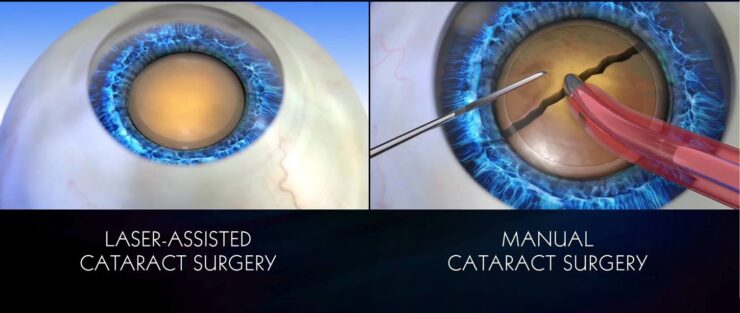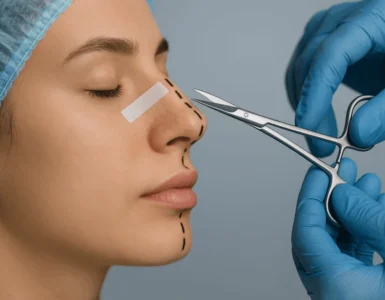When the lens inside the eye becomes opaque or cloudy, near and far vision can become blurred and cause an individual to feel they are looking through fog. This is known as a cataract and is most common in those aged 75 and over. In fact, by the age of 75, around 50% of people have cataracts. Eye surgery is the only option for cataract removal. In this article, we’ll clear all your doubts about the cataract surgery, and what are the two common type of cataract surgeries.
Is cataract surgery common?
Cataract surgery is the most commonly performed surgery in the United States, with over three million cataract surgeries performed each year.
Various types of eye surgery are available for cataract removal, which can be performed dependent on the patient’s medical circumstances. The two types of surgery used for cataract removal are traditional cataract surgery and laser cataract surgery.
What is traditional cataract surgery?
Traditional cataract surgery refers to surgery during which the doctor makes one or more small incision(s) by hand using a scalpel.
The doctor then breaks up the cataract using ultrasound applied via a probe shaped like a pen and can remove the pieces of the cataract through the incision.
Once the cloudy cataract lens has been removed, an artificial intraocular lens (IOL) is folded and inserted (through the same incision) into the eye in its place. Usually, the incision will not need stitches.
What can I expect following traditional cataract surgery?
The goal of eye surgery for cataract removal is to improve the patient’s vision. Glasses may be needed for near and distance vision.
Generally, traditional cataract surgery will include three months of post-operative care.
Also, Read: Everything you should know about dental braces
What is laser cataract surgery?
In laser cataract surgery the need for a hand-held surgical tool is replaced or aided using laser technology to make the incisions and soften the cataract so that ultrasound can then be used to break it up.
Following removal of the cloudy lens, the doctor implants the intraocular lens (IOL). Usually, the incision will not need stitches.
What can I expect following laser cataract surgery?
As in traditional cataract surgery, the goal of laser cataract surgery is to improve the patient’s vision.
The difference is that laser technology can also be used to reduce the need for the patient to wear glasses following recovery from surgery, with the goal to improve the patient’s overall vision.
Laser cataract surgery often includes a longer follow-up care package than traditional cataract surgery.
Do the recovery times differ?
Recovery times are the same for traditional cataract surgery and laser cataract surgery, although they differ from patient to patient.
It is possible for some patients to see clearly almost immediately, for others it may take one or two weeks. Full recovery should occur within approximately three months.
Disclaimer: The information present in the article is to the best of knowledge of the author. These are the views of an individual author, and we hold no responsibility, whatsoever, for any misleading information mentioned here.




























